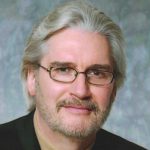 Sweet, Leonard. So Beautiful: Divine Design for Life and the Church. David C. Cook, 2009. ISBN: 978-1-4347-9979-1.
Sweet, Leonard. So Beautiful: Divine Design for Life and the Church. David C. Cook, 2009. ISBN: 978-1-4347-9979-1.
Meet the Author
Leonard Sweet is the E. Stanley Jones professor of evangelism at Drew University, was voted one of the 50 Most Influential Christians in America, and continues to write and speak prophetically about the church. An ordained United Methodist pastor, Sweet has authored over 20 books and 600 articles, and is perhaps best known for his forward thinking ideas about the church. For more information, visit his website.
Most American churches today are APC (Attractional, Propositional, and Colonial), which leads to Christians who are members, believers and consumers. The problems with the current model are numerous, but stem from a single disorder: Jesus Deficit Disorder. Sweet calls on churches to leave this familiar model for a biblical model he calls MRI (Missional, Relational, and Incarnational). MRI churches create Christians who are missionaries, disciples and world changers. Just as human DNA has three strands, the so beautiful DNA of the church has three strands as well: MRI. After considering each of the strands in-depth, he closes the book with a powerful epilogue suggesting practical ways to know if your church is so beautiful or not.
So What?
I am left with the struggle to consider what the real measures of success are and should be for my parish. In a culture that tends toward and is familiar with the ABC (Attendance, Buildings, and Cash) model and the metrics it provides there is a need to consider even more significant goals. To honor the need for accountability and measurability, new standards are needed. And, the reality remains that if the MRI produces organic growth it remains far more sustainable than attraction-led growth. A few of Sweet’s questions deserve further consideration:
- Rather than how much money did we take in, how much did we give away?
- Rather than how many new programs did we start, how many new partnerships with other congregations and businesses did we create?
- Rather than how many people are coming, how many more people are using our building this year than last year and how are our facilities becoming a community resource?
- Rather than how much work did the pastoral staff put in, how many volunteers were equipped and empowered by the paid staff to do the work of the church?
I have no passion to do things as they have always been done simply because that is the simplest or most familiar path. I don’t fear what some call the 7 last words of the church (we never did it that way before), but am concerned by the likely results of replicating the past. Rather than being someone who accepts the written and understood measures and expectations, it is my goal to help shape and continually redefine them.
